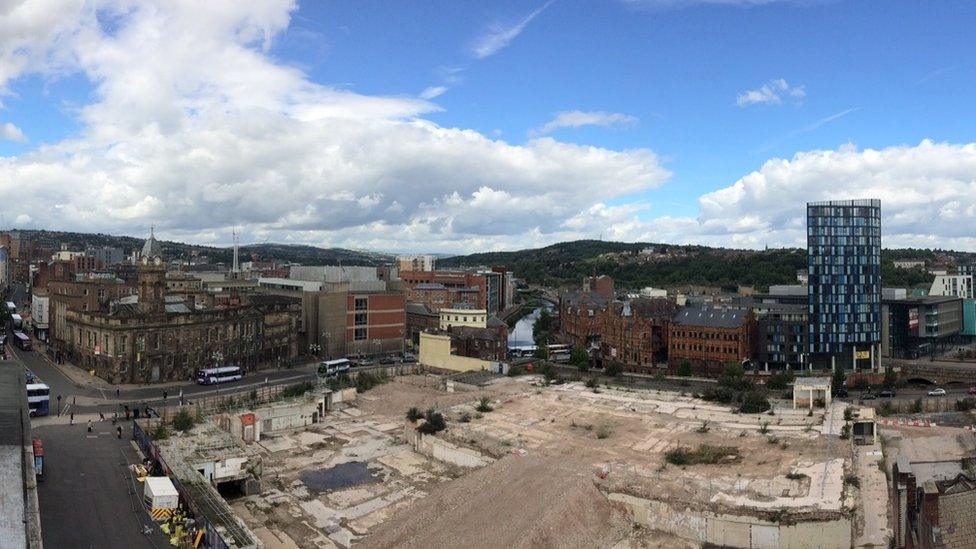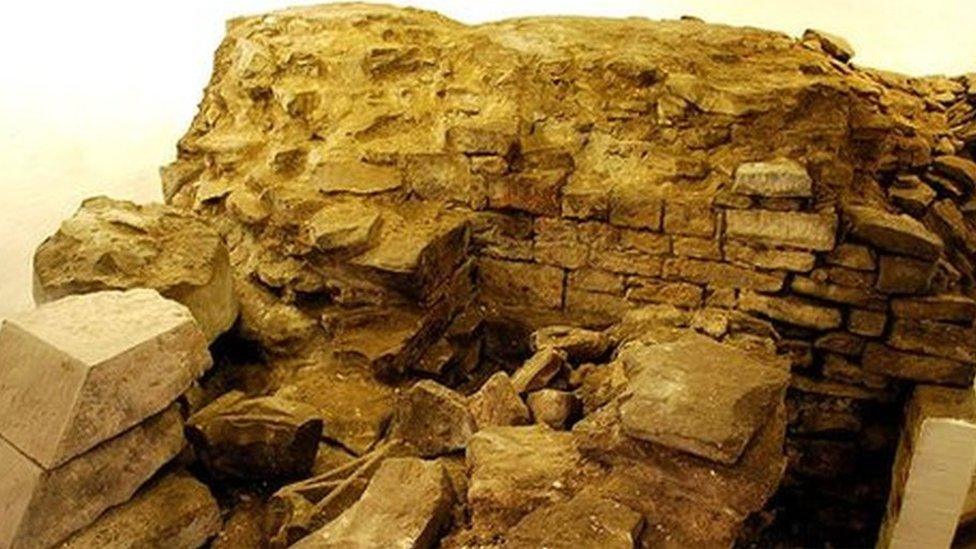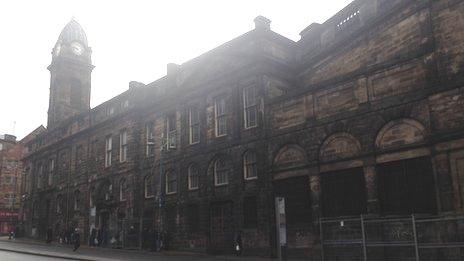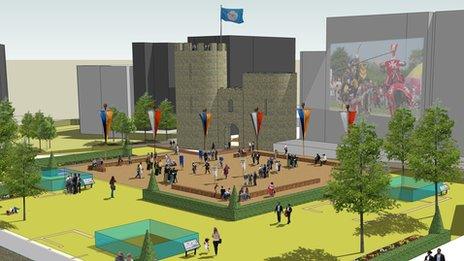Sheffield Castlegate £786,000 revamp fund announced
- Published

The view of the previous Castle Market site, looking on to the Old Town Hall and Lady's Bridge
The remains of a castle where Mary Queen of Scots was imprisoned for more than a decade are to be uncovered.
Sheffield City Council announced nearly £800,000 to kickstart a revamp of the city's Castlegate Quarter, including a fresh dig on the castle site.
The money will also go towards a new green "corridor", the transformation of empty shops and to help protect the city's Old Town Hall.
Castlegate is the oldest part of Sheffield.

An artist's impression of how the Castlegate redevelopment might look
It had a castle, bridge, market and houses on the site since at least the Norman Conquest.
The area was the centre of trading, commerce, local government, law and order, trade, transport and hospitality but declined in the 20th century.
The council said the money, £786,000 from its Capital Growth Fund, would kickstart the area over the next 18 months, giving "new life" as a digital business hub, whilst also celebrating its history.

The archaeological dig will reveal the full extent of the castle's surviving ruins for the first time
It will pay for:
A major archaeological dig to reveal Castlegate's "hidden history and landscape" and reconnect it with the nearby canal basin at Victoria Quays
Uncovering of the underground River Sheaf, which gave Sheffield its name
Designs to turn "redundant road space along Exchange Street and Castlegate into colourful meadows" - the Grey to Green corridor currently runs past the city's law courts on West Bar
Empty shops and buildings on Exchange Street and Waingate transformed and used for new shops, cafes, arts and music spaces, and start-up tech businesses. Castle House Co-op, the former Sheffield Stock Exchange, Hancock and Lants stable building and Canada House will be brought back to life
Museums Sheffield, commissioned by the University of Sheffield, has begun the first professional evaluation of the Castle Remains collection
Preventing further deterioration of the 200-year-old Grade II-listed derelict Old Town Hall on Waingate
A new conservation area to protect the historic townscape
Security patrols to protect the castle site

Mary Queen of Scots was imprisoned in Sheffield in the 1560s
Sheffield Castle was destroyed in 1648 and its remains were covered by Castle Market in the 1960s, with the only visible parts locked in basements.
The indoor Castle Market closed in 2013 and was demolished in February 2015. It was replaced with the new Moor Market.
- Published8 January 2015

- Published30 July 2014

- Published25 November 2013

- Published23 November 2013